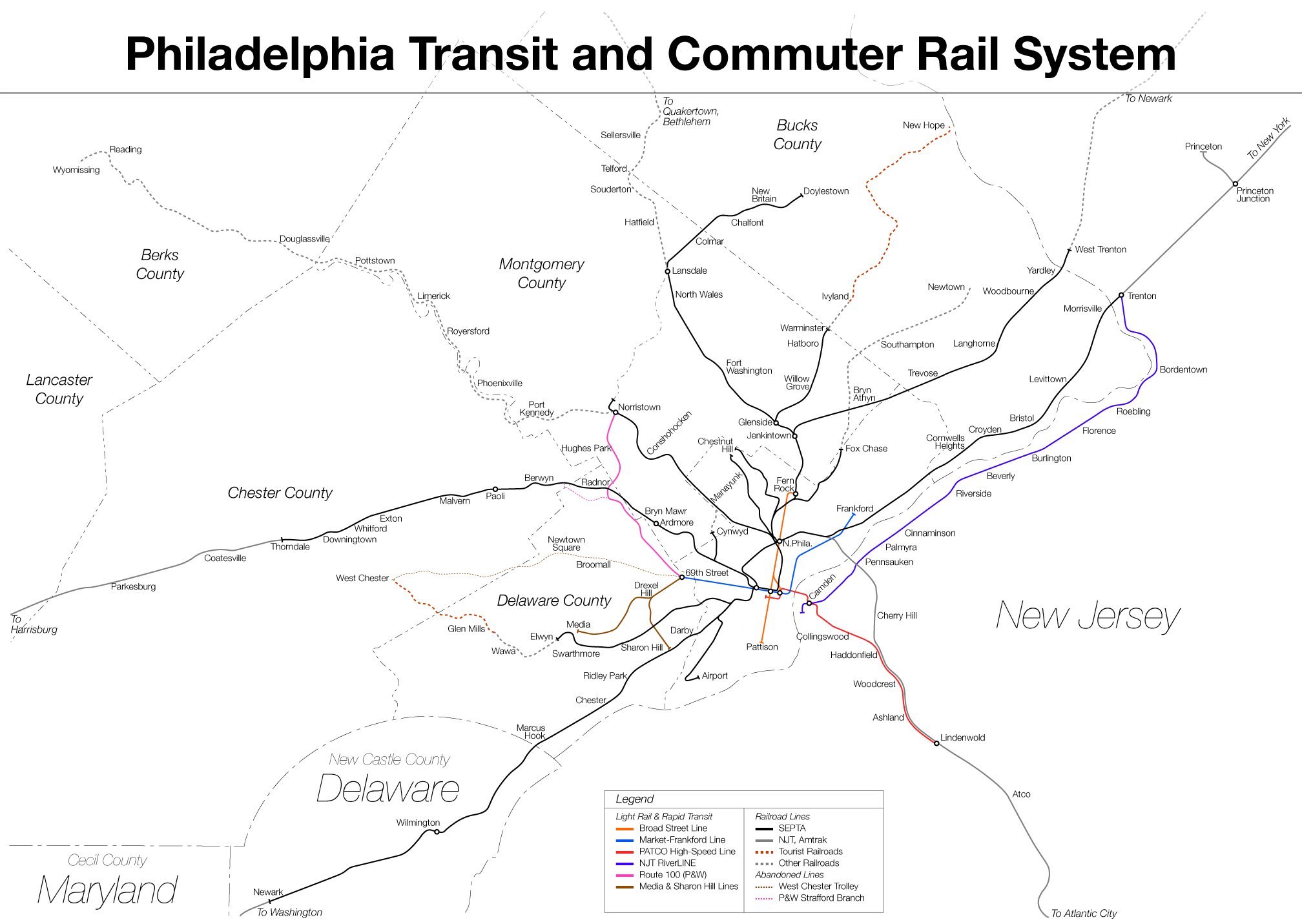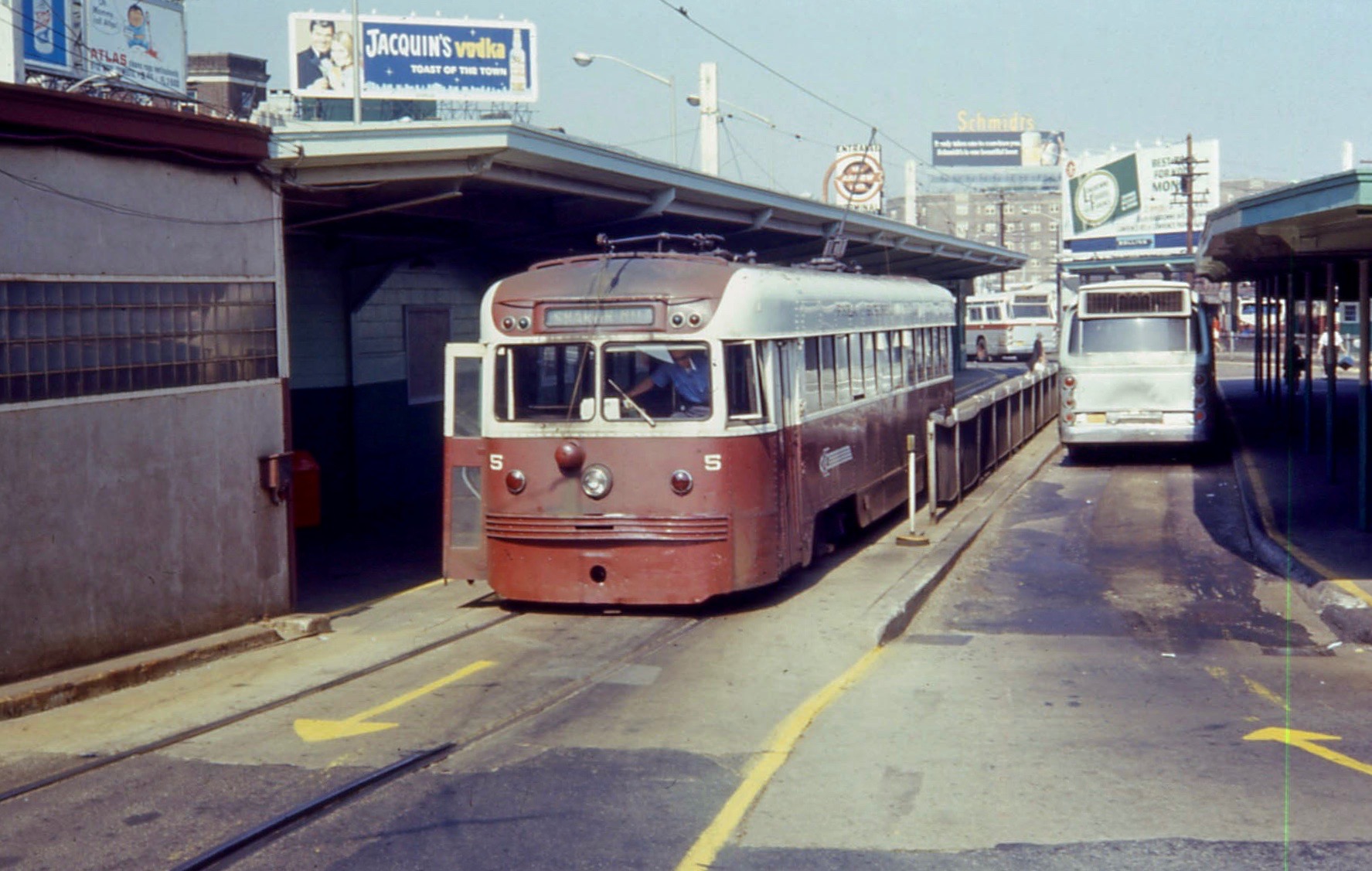|
2nd Street Station (SEPTA)
2nd Street station (signed as 2nd Street–Penn's Landing–Old City on platforms) is a subway station on the Market-Frankford Line, beneath the intersection of 2nd Street and Market Street in Center City Philadelphia, Pennsylvania. It is the easternmost stop in Center City and also the easternmost underground stop on the line. The station serves the Old City neighborhood of Philadelphia, with station signs originally reading "Olde City". The 'e' has been covered on the signs with obvious blue stickers. The station also serves Penn's Landing and Spruce Street Harbor Park along the Delaware River. 2nd Street is also served by SEPTA bus routes 5, 17, 33, and 48 also serve the station. History The station opened August 3, 1908 as part of the first extension of the Philadelphia Rapid Transit Company's Market Street Subway. The line had originally opened a year earlier between 69th Street and City Hall. The station was the eastern terminal of the line until September 7 o ... [...More Info...] [...Related Items...] OR: [Wikipedia] [Google] [Baidu] |
Market Street (Philadelphia)
Market Street, originally known as High Street, is a major east–west street in Philadelphia. The street is signed as Pennsylvania Route 3 between 38th Street (U.S. Route 13) and 15th Street ( PA 611). A short portion of the road continues west from Cobbs Creek Parkway (63rd Street) to Delaware County, adjacent to Philadelphia. ‘High Street’ was the familiar name of the principal street in nearly every English town at the time Philadelphia was founded. But if Philadelphia was indebted to England for the name of High Street, nearly every American town is, in turn, indebted to Philadelphia for its Market Street. Long before the city was laid out or settled, Philadelphia's founder, William Penn, had planned that markets would be held regularly on the wide High Street. The city's first market stalls were situated in the center of the thoroughfare starting at Front Street and proceeding west eventually to 8th Street. The stalls soon became covered and were not taken down as pla ... [...More Info...] [...Related Items...] OR: [Wikipedia] [Google] [Baidu] |
SEPTA City Transit Division Bus Routes
The City Transit Division of the Southeastern Pennsylvania Transportation Authority (SEPTA) operate almost all of Philadelphia's public transit, including all six trolley, three trackless trolley, and 70 bus lines within city limits. Some of the bordering municipalities are served by the City Transit division, despite not being part of the city. For example, Cheltenham Township has 13 city division routes and no Suburban Division ones. The City Transit division also operates the 400 Series routes which are designed to serve students attending schools in the city of Philadelphia. The City Transit Division is broken down into seven districts (Allegheny, Callowhill, Comly, Elmwood, Frankford, Midvale, and Southern) and Contract Operations. __TOC__ History Transit in Philadelphia began with multiple independent horse car, cable, and traction companies, including the privately established entities: Philadelphia Passenger Railway Company, the Thirteenth & Fifteenth Street Passeng ... [...More Info...] [...Related Items...] OR: [Wikipedia] [Google] [Baidu] |
Railway Stations Located Underground In Pennsylvania
Rail transport (also known as train transport) is a means of transport that transfers passengers and goods on wheeled vehicles running on rails, which are incorporated in tracks. In contrast to road transport, where the vehicles run on a prepared flat surface, rail vehicles (rolling stock) are directionally guided by the tracks on which they run. Tracks usually consist of steel rails, installed on sleepers (ties) set in ballast, on which the rolling stock, usually fitted with metal wheels, moves. Other variations are also possible, such as "slab track", in which the rails are fastened to a concrete foundation resting on a prepared subsurface. Rolling stock in a rail transport system generally encounters lower frictional resistance than rubber-tyred road vehicles, so passenger and freight cars (carriages and wagons) can be coupled into longer trains. The operation is carried out by a railway company, providing transport between train stations or freight customer faciliti ... [...More Info...] [...Related Items...] OR: [Wikipedia] [Google] [Baidu] |
Railway Stations In The United States Opened In 1908
Rail transport (also known as train transport) is a means of transport that transfers passengers and goods on wheeled vehicles running on rails, which are incorporated in tracks. In contrast to road transport, where the vehicles run on a prepared flat surface, rail vehicles (rolling stock) are directionally guided by the tracks on which they run. Tracks usually consist of steel rails, installed on sleepers (ties) set in ballast, on which the rolling stock, usually fitted with metal wheels, moves. Other variations are also possible, such as "slab track", in which the rails are fastened to a concrete foundation resting on a prepared subsurface. Rolling stock in a rail transport system generally encounters lower frictional resistance than rubber-tyred road vehicles, so passenger and freight cars (carriages and wagons) can be coupled into longer trains. The operation is carried out by a railway company, providing transport between train stations or freight customer facilit ... [...More Info...] [...Related Items...] OR: [Wikipedia] [Google] [Baidu] |
Railway Stations In Philadelphia
Rail transport (also known as train transport) is a means of transport that transfers passengers and goods on wheeled vehicles running on rails, which are incorporated in tracks. In contrast to road transport, where the vehicles run on a prepared flat surface, rail vehicles (rolling stock) are directionally guided by the tracks on which they run. Tracks usually consist of steel rails, installed on sleepers (ties) set in ballast, on which the rolling stock, usually fitted with metal wheels, moves. Other variations are also possible, such as "slab track", in which the rails are fastened to a concrete foundation resting on a prepared subsurface. Rolling stock in a rail transport system generally encounters lower frictional resistance than rubber-tyred road vehicles, so passenger and freight cars (carriages and wagons) can be coupled into longer trains. The operation is carried out by a railway company, providing transport between train stations or freight customer facilit ... [...More Info...] [...Related Items...] OR: [Wikipedia] [Google] [Baidu] |
SEPTA Market-Frankford Line Stations
The Southeastern Pennsylvania Transportation Authority (SEPTA) is a regional public transportation authority that operates bus, rapid transit, commuter rail, light rail, and electric trolleybus services for nearly 4 million people in five counties in and around Philadelphia, Pennsylvania. It also manages projects that maintain, replace and expand its infrastructure, facilities and vehicles. SEPTA is the major transit provider for Philadelphia and the counties of Delaware, Montgomery, Bucks, and Chester. It is a state-created authority, with the majority of its board appointed by the five Pennsylvania counties it serves. While several SEPTA commuter rail lines terminate in the nearby states of Delaware and New Jersey, additional service to Philadelphia from those states is provided by other agencies: the PATCO Speedline from Camden County, New Jersey is run by the Delaware River Port Authority, a bi-state agency; NJ Transit operates many bus lines and a commuter rail line to P ... [...More Info...] [...Related Items...] OR: [Wikipedia] [Google] [Baidu] |
Northeast Philadelphia
Northeast Philadelphia, nicknamed Northeast Philly, the Northeast and the Great Northeast, is a section of Philadelphia, Pennsylvania. According to the 2000 census, Northeast Philadelphia has a population of between 300,000 and 450,000, depending on how the area is defined. Beginning in the 1980s, many of the Northeast's middle class children graduated from college and settled in suburbs, especially nearby Bucks County. The Northeast is known as being home to a large working class Irish American population, but it is also home to Polish, German, Jewish, Italian, African American, Portuguese, Brazilian, Russian, Puerto Rican, Dominican, Ukrainian, Indian, Chinese, and Vietnamese neighborhoods. Geography Due to the size of the Northeast, the Philadelphia City Planning Commission divides it into two regions called Near Northeast and Far Northeast, the names being derived from their distance from Center City. The term Near Northeast is not used colloquially; Lower Northeast is mo ... [...More Info...] [...Related Items...] OR: [Wikipedia] [Google] [Baidu] |
15th Street Station (SEPTA)
15th Street station is a subway station in Philadelphia. It is served by SEPTA's Market–Frankford Line and all routes of the subway–surface trolley lines. A free interchange also provides access to the Broad Street Line at City Hall station, which is connected to 15th Street by the Downtown Link underground concourse. The concourse also connects to Regional Rail lines at Suburban Station. It is the busiest station on the Market–Frankford Line, with 29,905 boardings on an average weekday. The station is in the very heart of Center City Philadelphia. City Hall lies across the street from the station, and attractions as Love Park, the Penn Center area, and the Comcast Center are within walking distance. History 15th Street was the original eastern terminus of the Market–Frankford subway–elevated, which was opened by the Philadelphia Rapid Transit Company on August 3, 1907, and ran west to 69th Street in Upper Darby. The line was eventually extended eastward to 2nd Str ... [...More Info...] [...Related Items...] OR: [Wikipedia] [Google] [Baidu] |
69th Street Transportation Center
The 69th Street Transportation Center is a SEPTA terminal in the Terminal Square section of Upper Darby, Pennsylvania, just west of the city limits of Philadelphia. The terminal serves the Market–Frankford Line, Norristown High Speed Line, and the Media–Sharon Hill Line trolleys, and multiple bus routes. It is located at the end of 69th Street, a major retail corridor in Upper Darby, across Market Street ( Route 3) from the Tower Theater. Until 2011, the station was primarily known as 69th Street Terminal. 69th Street is the second busiest transfer point in the SEPTA system (after 15th Street/ City Hall station) serving 35,000 passengers every weekday. It is also the only SEPTA facility to serve both City Transit and Suburban Transit routes. History 69th Street is one of the original Market Street Elevated stations built by the Philadelphia Rapid Transit Company; the line opened for service on March 4, 1907 between here and stations. Shortly after on May 22 of the same yea ... [...More Info...] [...Related Items...] OR: [Wikipedia] [Google] [Baidu] |
Philadelphia Rapid Transit Company
The Philadelphia Transportation Company (PTC) was the main public transit operator in Philadelphia, Pennsylvania, from 1940 to 1968. A private company, PTC was the successor to the Philadelphia Rapid Transit Company (PRT), in operation since 1902, and was the immediate predecessor of the Southeastern Pennsylvania Transportation Authority (SEPTA). History PTC was established on January 1, 1940, by the merger of the PRT and several smaller, then-independent transit companies operating in and near the city. It operated a citywide system of bus, trolley, and trackless trolley routes, the Market–Frankford Line (subway-elevated rail), the Broad Street Line (subway), and the Delaware River Bridge Line (subway-elevated rail to City Hall, Camden, New Jersey, and now part of the PATCO Speedline) which became SEPTA's City Transit Division. PTC operated the rapid transit lines in urban Philadelphia – principally the Market–Frankford Line and Broad Street Line – leasing their fi ... [...More Info...] [...Related Items...] OR: [Wikipedia] [Google] [Baidu] |
SEPTA Route 48
The City Transit Division of the Southeastern Pennsylvania Transportation Authority (SEPTA) operate almost all of Philadelphia's public transit, including all six trolley, three trackless trolley, and 70 bus lines within city limits. Some of the bordering municipalities are served by the City Transit division, despite not being part of the city. For example, Cheltenham Township has 13 city division routes and no Suburban Division ones. The City Transit division also operates the 400 Series routes which are designed to serve students attending schools in the city of Philadelphia. The City Transit Division is broken down into seven districts (Allegheny, Callowhill, Comly, Elmwood, Frankford, Midvale, and Southern) and Contract Operations. __TOC__ History Transit in Philadelphia began with multiple independent horse car, cable, and traction companies, including the privately established entities: Philadelphia Passenger Railway Company, the Thirteenth & Fifteenth Street Passeng ... [...More Info...] [...Related Items...] OR: [Wikipedia] [Google] [Baidu] |

.jpg)






_Bridge_Line_&_Fare_Tokens.jpg)